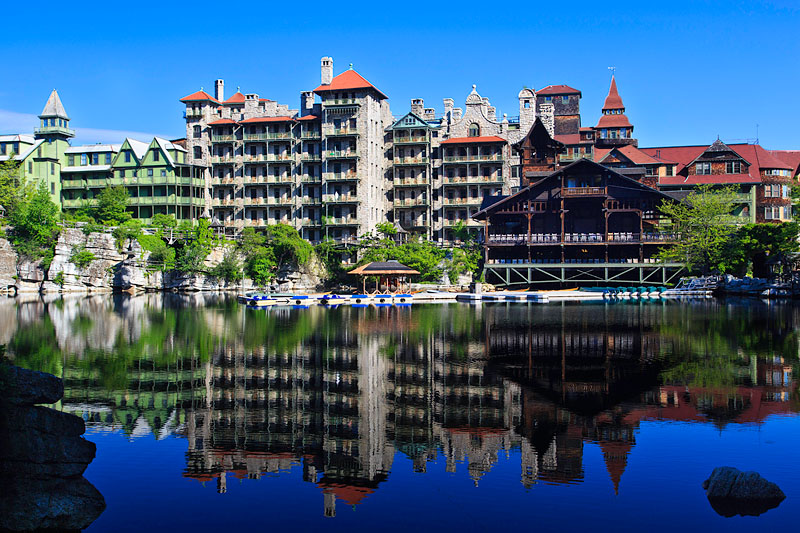
by Scott Martin Photography | Jun 1, 2012 | Blog, Landscapes, Naturescapes, Travel
Deb & I spent a wonderful three days at the Mohonk Mountain House near New Paltz, New York which is about 85 miles due north of New York City. We were there over the Victoria Day Weekend along with about twelve other Chiropractors and their spouses to attend a coaching seminar with TLC 4 Superteams. TLC is one of the premier training organizations for chiropractors and it is a privilege to be one of their coaches; helping other chiropractors provide superb care for their patients.
The Mohonk Mountain House is the #2 Ranked resort spa in the United States and it is well worth the trip if you are looking for a quiet place to get a way for a few days. The 266 room Victorian style lodge was built in 1869 and I believe has remained in the same family since that time. It has entertained presidents, celebrities and normal people like us over the years and offers a multitude of outdoor adventure activities as well as a world class spa to pamper you afterwards.
We didn’t have a lot of time for photography but thought you may enjoy a few snap shots taken around the grounds.
The main lodge taken from across Lake Mohonk

.
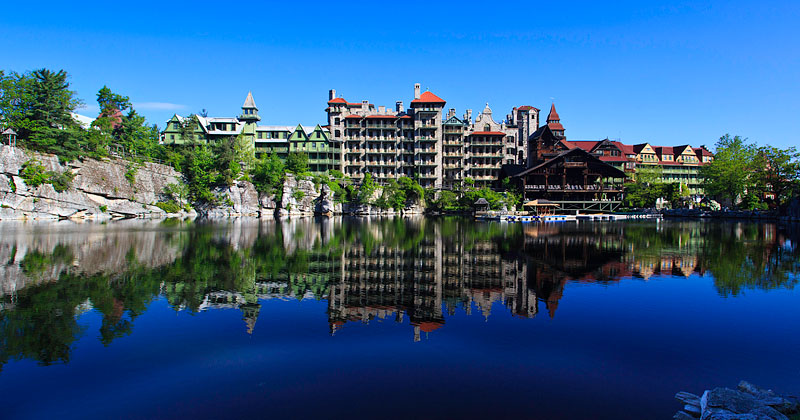
.
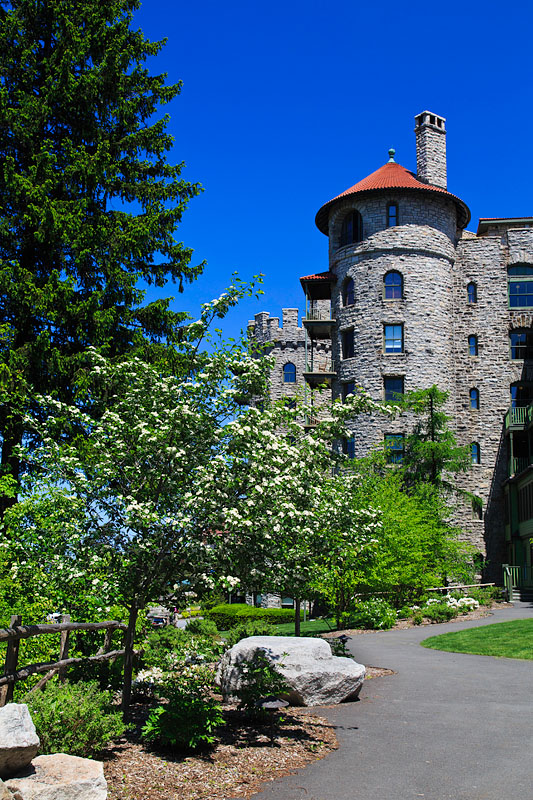
There were many gazebos and porches around the property which were perfect for reading and just relaxing and enjoying the view.
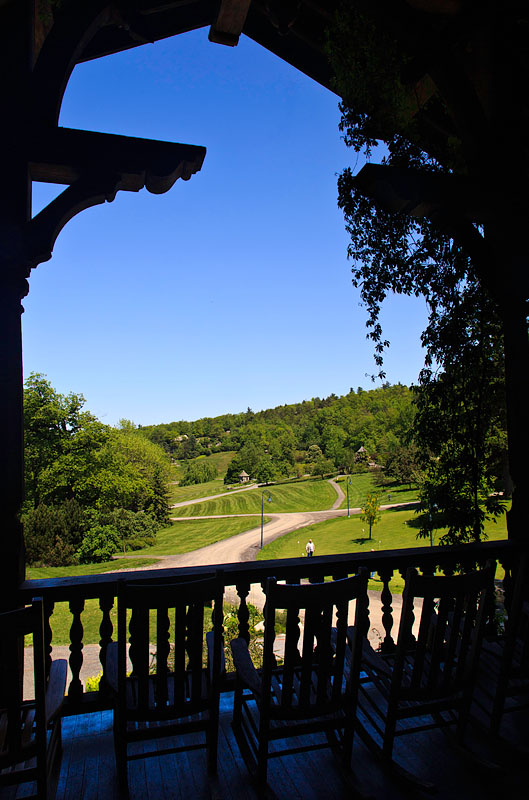
.
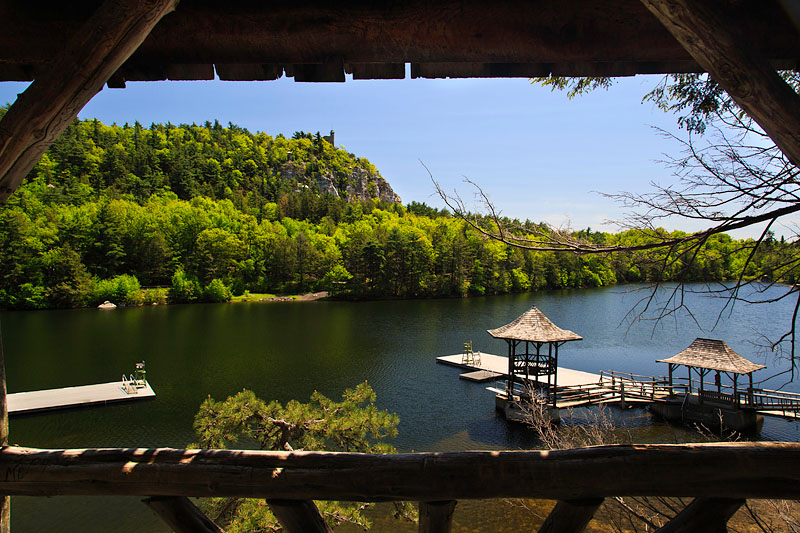
.
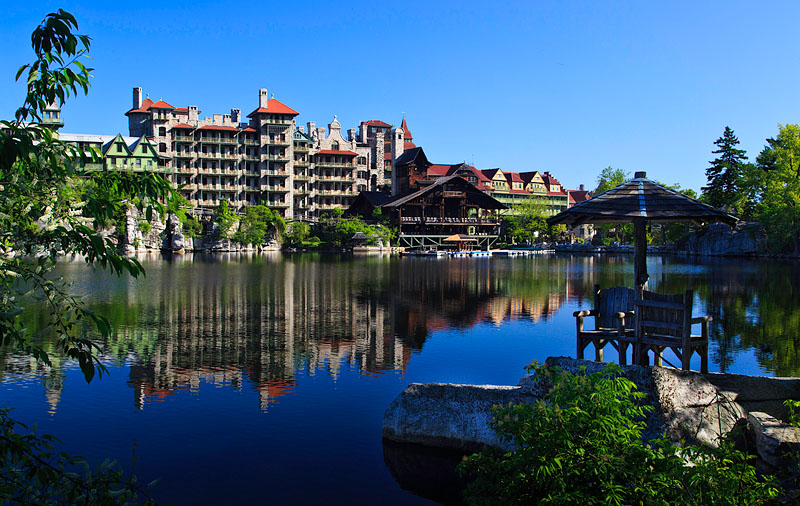
Looking out from the other side of the lodge provided a great view of the Catskills Mountains
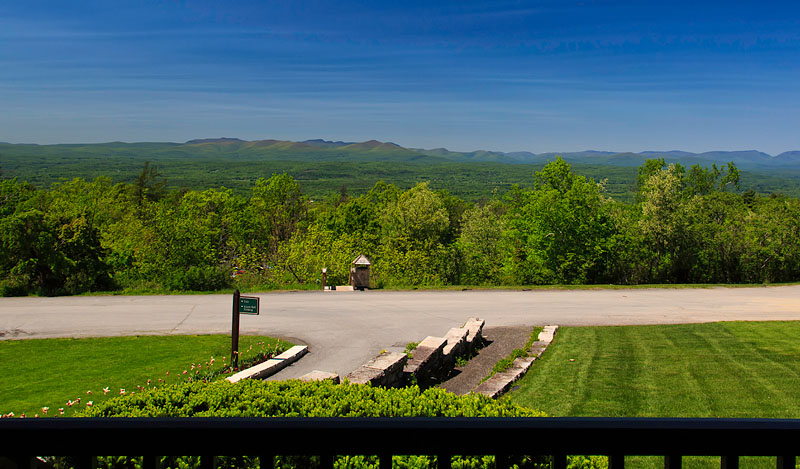
.
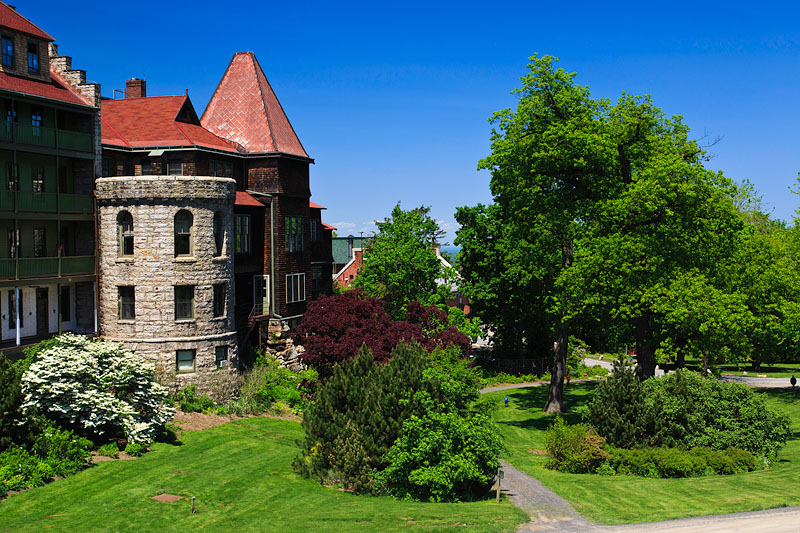
The view from the room.
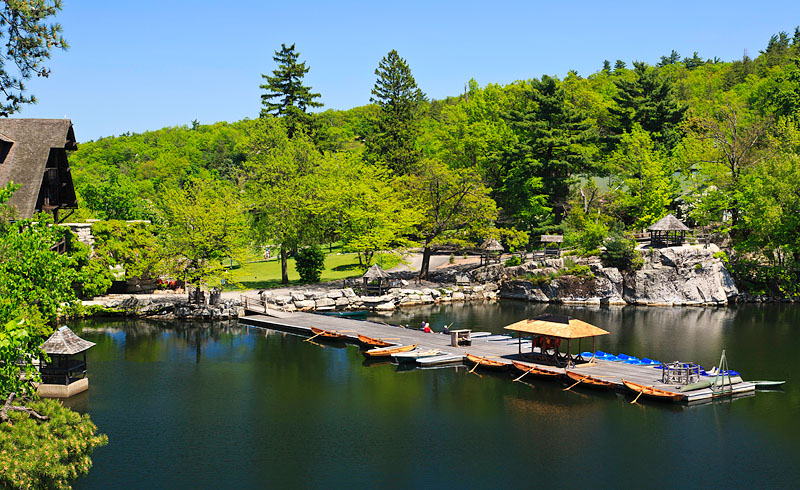
.
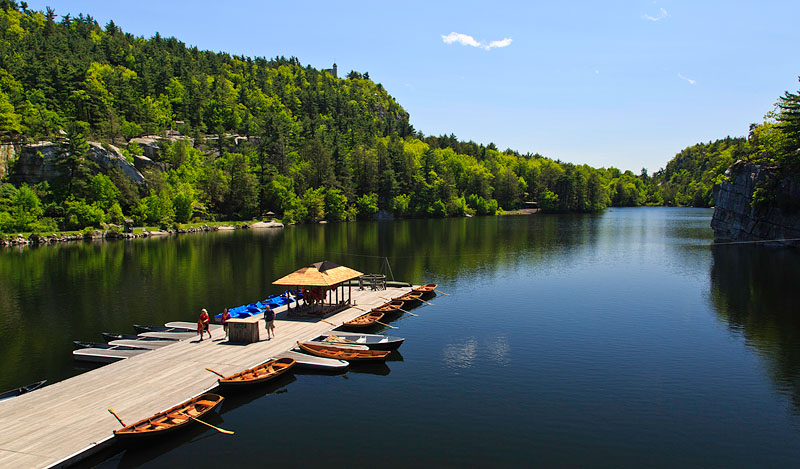
.
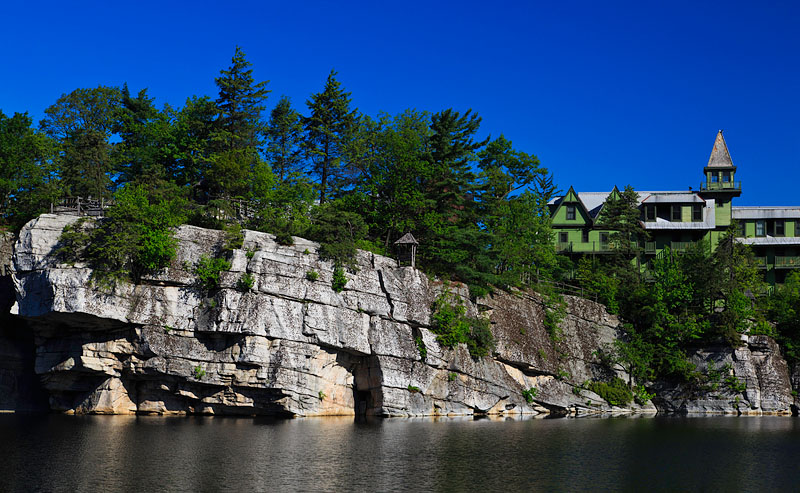
.
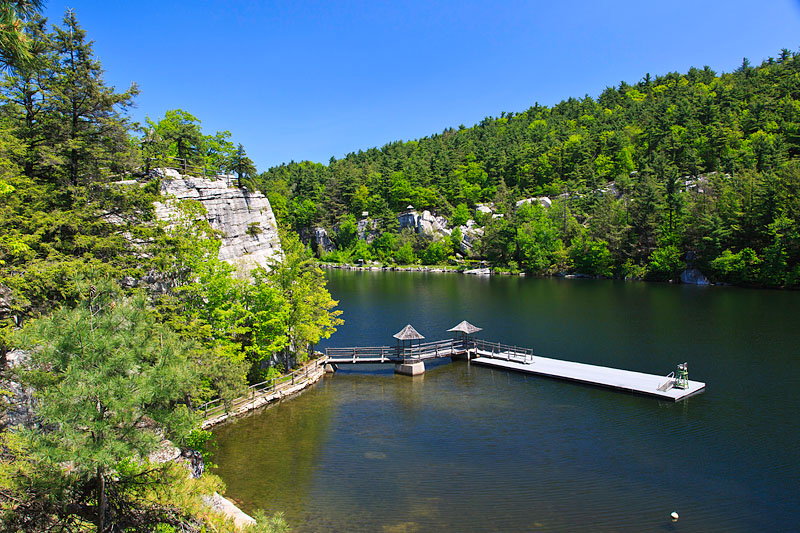
.
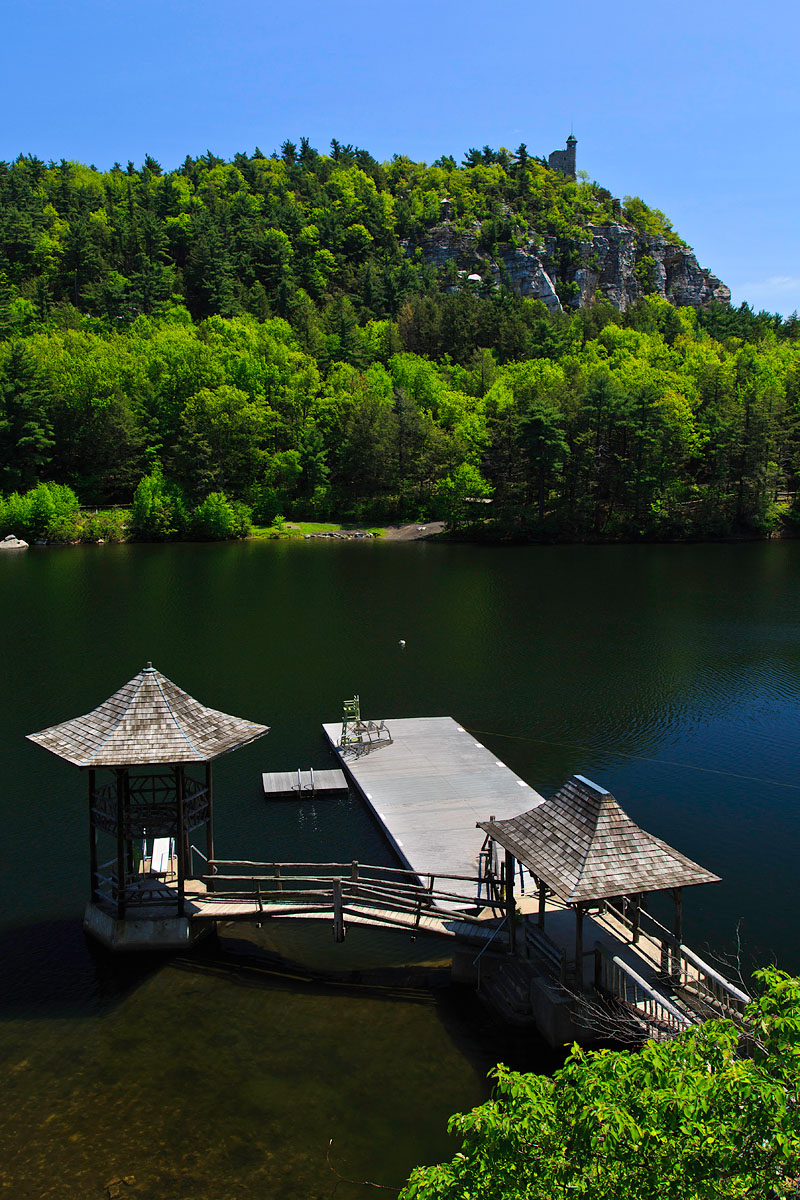
.
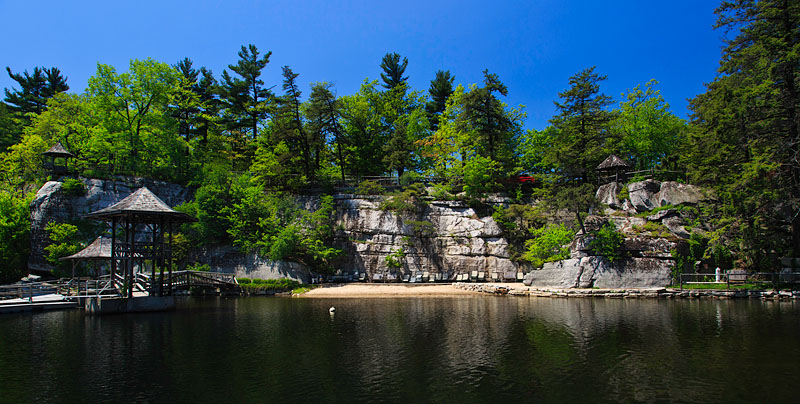
.
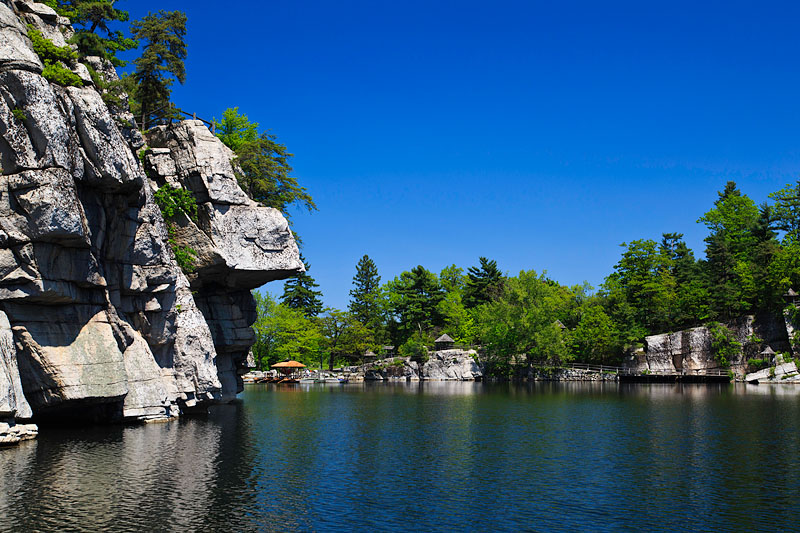
.
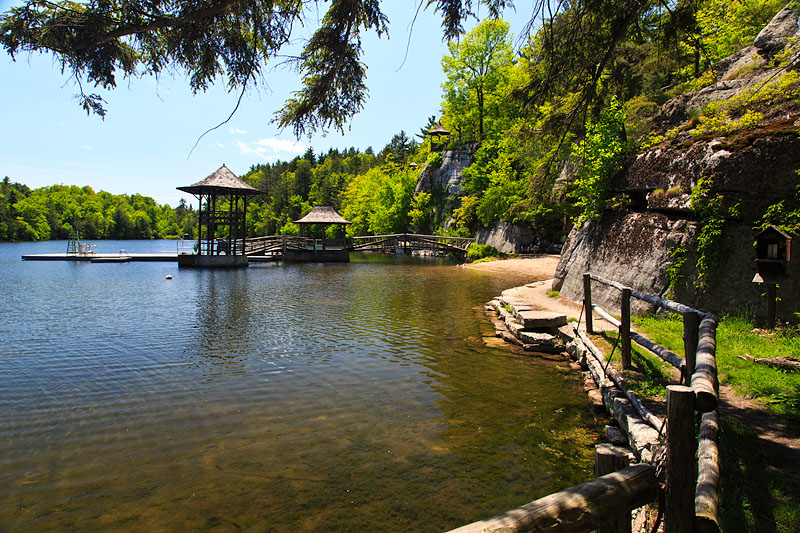
All of these shots were taken with the 5D Mk III and either 16-35 or 24-105 lenses.
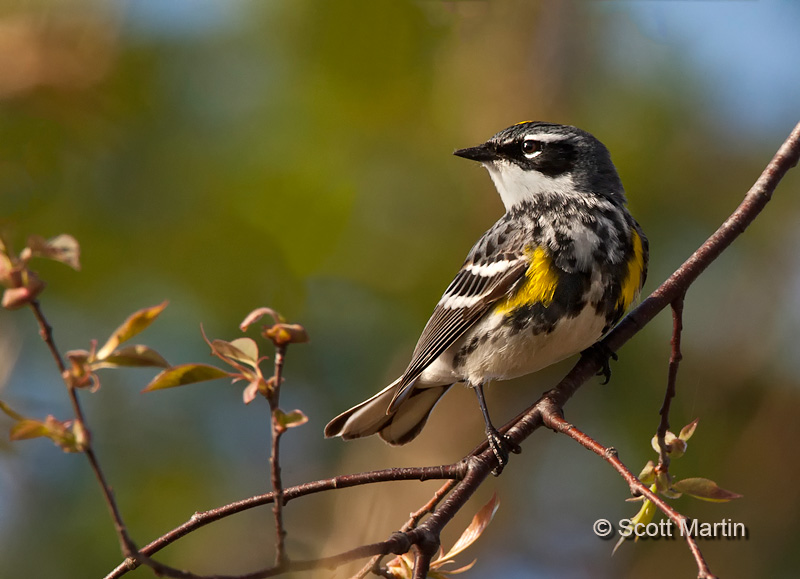
by Scott Martin Photography | May 8, 2012 | Birds, Blog, Educational, Sparrows, Warblers
Although I haven’t had much time to get out with a camera, its great to see the Spring migrants starting to show up in large numbers, especially the Warblers. More than twenty species have been seen in our area and fortunately the leaf cover is still sparse enough that you can catch a good look at most of them. That will all change in the next few days as the leaves and ground cover reach full bloom.
We spent last weekend at the cottage, getting it ready for another summer and it was a pleasant surprise to have a number of Yellow Rumped Warblers in the trees by our deck. Although one of the most common warblers, they certainly are pretty, especially when they pose for you!

This next shot of a Red Winged Blackbird that didn’t want his picture taken is from Cranberry Marsh which is just off Lake Ontario in the south end of the Lynde Shores Conservation area in Ajax, Ontario.
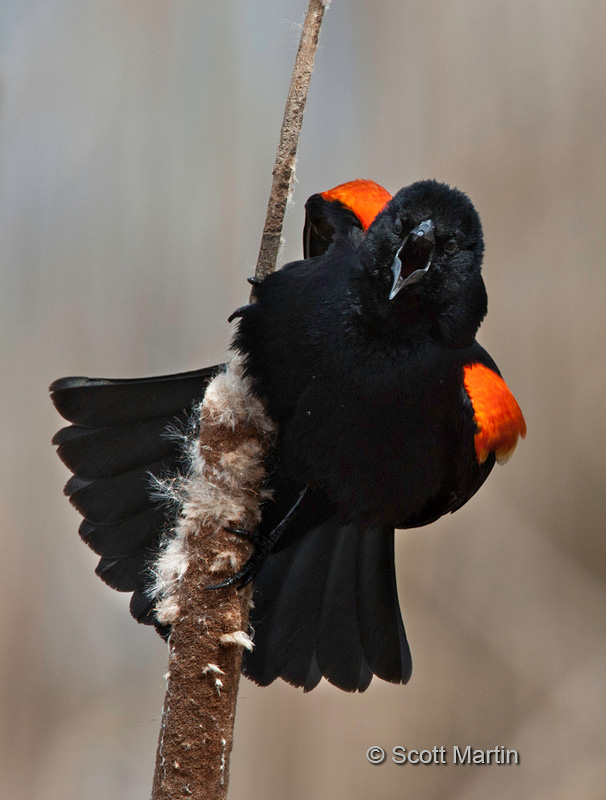
Two photographers whose blog I follow are Darwin Wiggett and Samantha Chrysanthou and one of their recent blog postings talked a lot about using different crops to enhance images, including the square crop. This White Throated Sparrow shot provided a good opportunity to practice with a square crop.
This image was taken in Thickson’s Woods in Oshawa and the Sparrow landed on a very interesting perch, nicely separated from the back ground. The problem is the perch overwhelms the small bird, which is normally a ‘no-no’ for good bird images. Typically you can minimize the large perch by cropping the photo to minimize the visual impact of the perch, resulting in this typical landscape oriented crop.

After reading Darwin’s blog on square crops, and quite liking this large perch, I decided to re-do the little sparrow on the big perch in a square format.
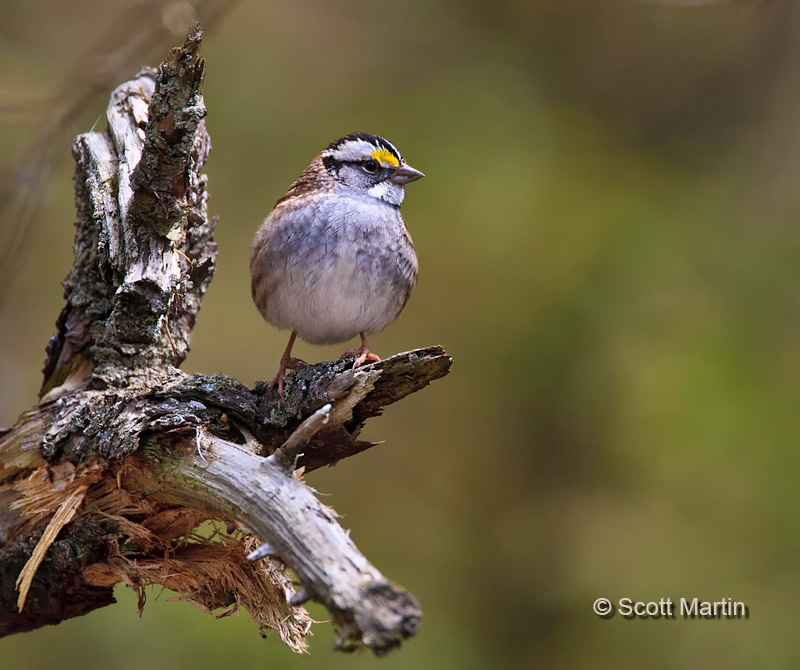
It is always a good practice to think outside the box and break down some of the traditions we photographers cling to, especially when it comes to composition and all the other ‘un-written’ rules of photography.
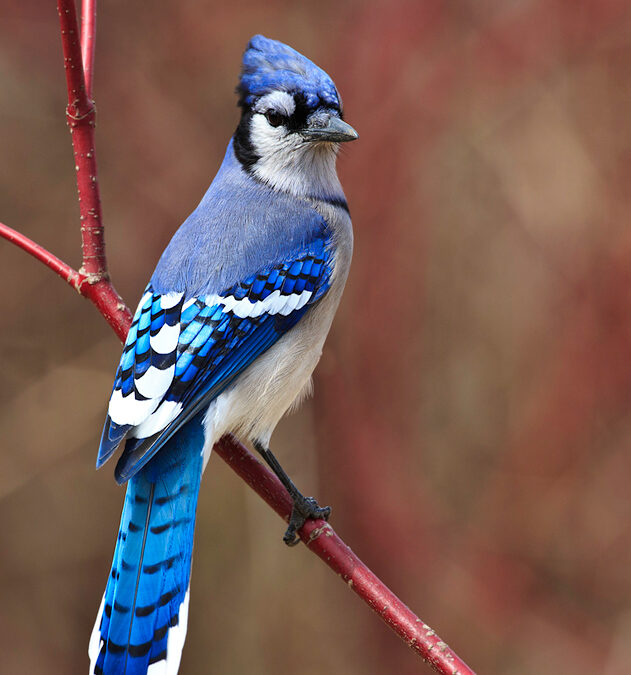
by Scott Martin Photography | Apr 27, 2012 | Birds, Blog, Educational, Sparrows, Woodpeckers
Canon is clearly the global leader in DSLR sales, with $10.5B in sales in 2010 compared to second place Nikon with $2.5B in sales. Sony places a distant third in the pecking order. A number of months ago Canon announced the release of two new camera bodies, the 1Dx and the 5D Mk III, Both of these bodies have full frame sensors, meaning that the size of the electronic sensor is the same as the frame size of the old 35mm SLR film cameras (36x24mm). The vast majority of DSLR’s sold today have smaller sensors, which results in the sensor ‘seeing’ a smaller field of view than would be seen with a 35mm film camera having a lens of equal focal length. The quantification of this phenomenon, called the Crop Factor, is made by determining the ratio between the diagonal length of the reference sensor size and the diagonal length of the smaller sensor. With crop body DSLR’s the crop factor is typically 1.3 or 1.6 for Canon cameras and 1.5 for Nikon cameras. The crop factor allows the photographer to calculate the effective focal length of a lens on a crop body camera compared to that same lens on a full frame camera. For example if a 50mm lens is attached to a DSLR with a 1.5 Crop Factor, the 50mm lens will perform as a 50 x 1.5 or 75mm lens would on a film body.
You may be saying to yourself “Who cares”, however it does make a difference based on the type of photography you do. For example landscape photographers often want to capture as large a field of view as possible and therefore use wide-angle lenses (shorter focal length lenses) to accomplish this. Right away it becomes evident that crop body cameras are a detriment if the widest possible field of view is desired. A 16mm lens effectively becomes a 25.6mm lens on a 1.6 crop body. This is why nature photographers prefer full frame DSLR’s for landscape work. The bird photographer on the other hand finds that the crop body is a great help to getting better shots because of the advantage gained by the crop factor. My 700mm lens effectively becomes an 1120mm lens on a 1.6 crop body.
The problem with photography becomes what to do when buying a camera if you are both a landscape and a bird photographer. There is an easy answer to this question…..buy two cameras, a crop body and a full frame body! Besides, if you are a serious photographer, you really should have some redundancy in you gear. If your only body broke while shooting a wedding it would be a disaster, so a second body is always a good idea.
Anyway, in order to heed my own advice, a Canon 5D Mk III was added to the gear bag a couple of weeks ago and so far its been a pleasure to use and fun to be playing with the first full frame camera since selling my old EOS 630 back in the early nineties. The new 5D Mk III has a 22.4 megapixel sensor and Canon’s new 61 point auto focussing system which is surprisingly fast. It’s ISO range of 50-102,400 is amazing and means this camera almost sees in the dark! Another new perk for me is that the 5D also shoots full HD video which is going to be fun.
The following images are among the first taken with the camera and have not been processed other than converting and resizing the RAW files for display on the web.
Blue Jay
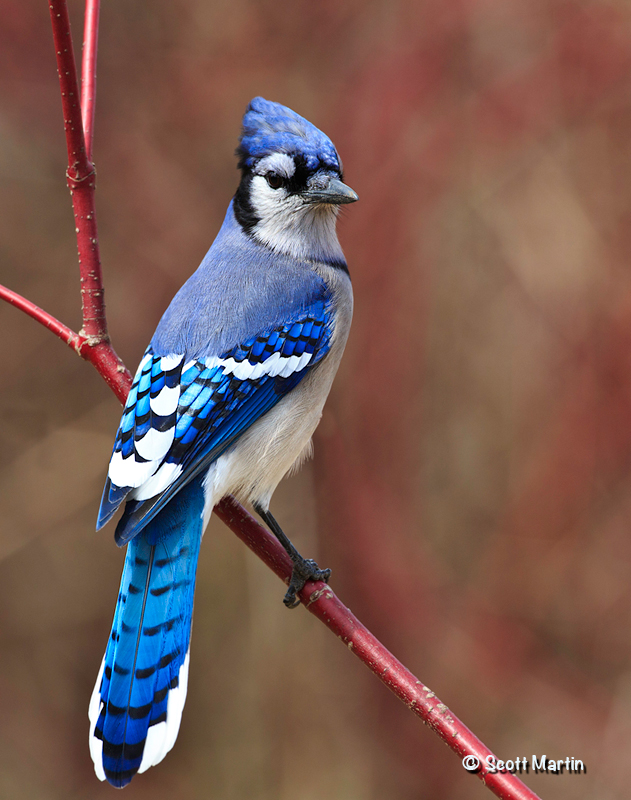
Downy Woodpecker
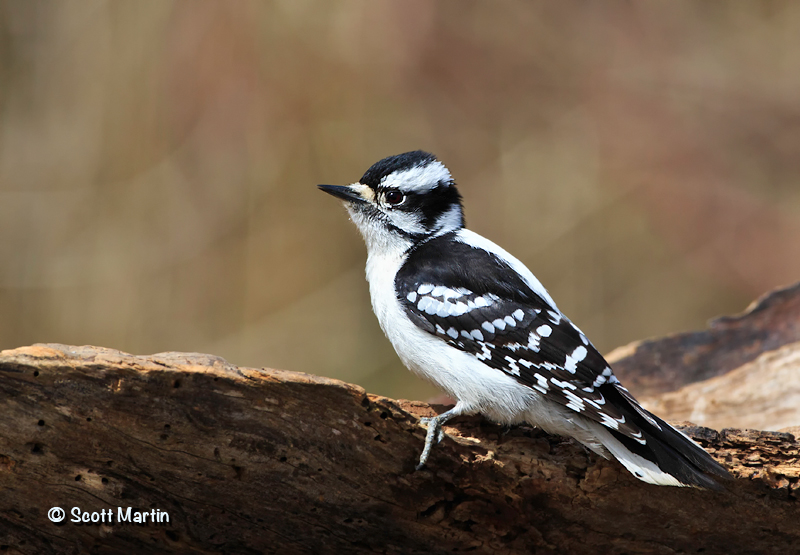
Junco
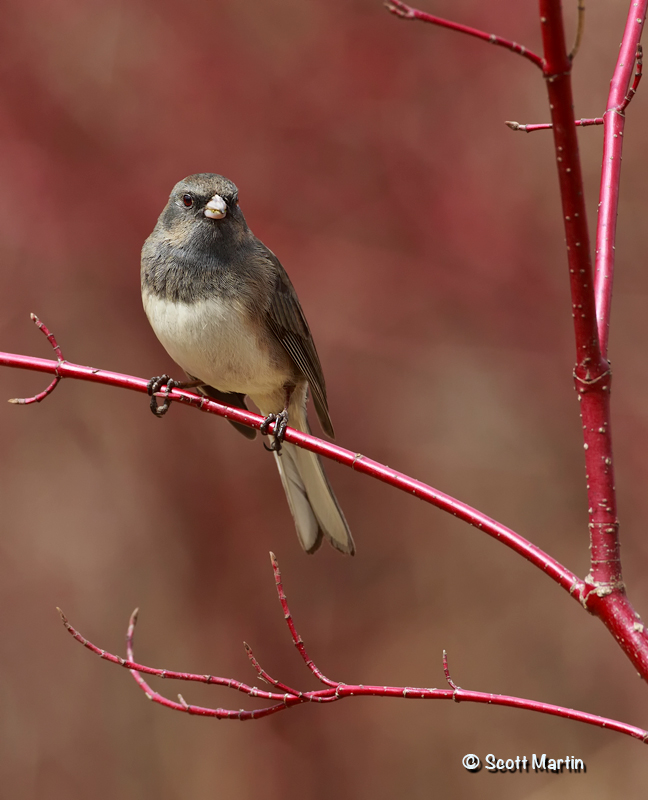
.
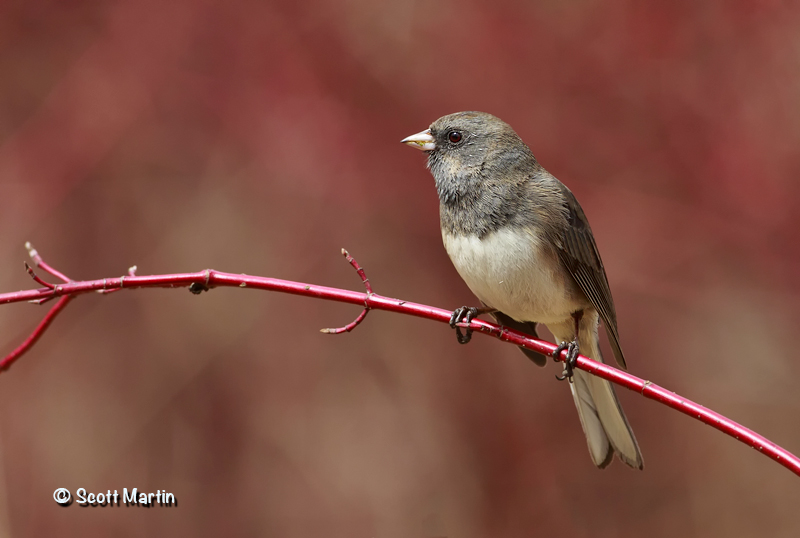
Red Winged Blackbird
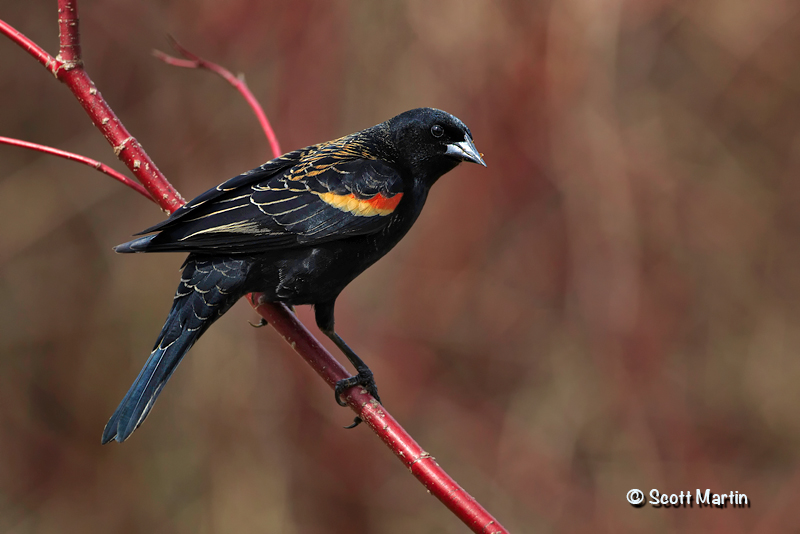
Red Squirrel
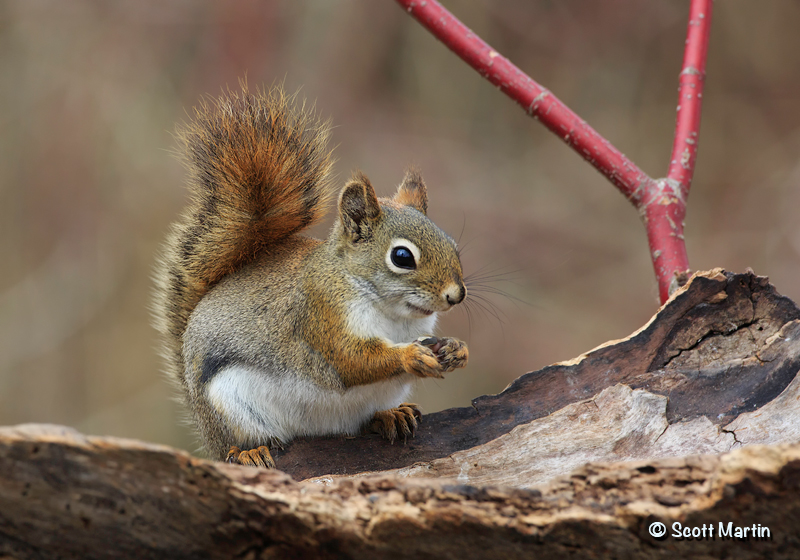
And finally a link to a quick video test of a Red Squirrel
As time permits I plan to post a few more detailed tests of the camera, especially ISO comparisons to help determine how high the ISO can be pushed and still get a useable image.
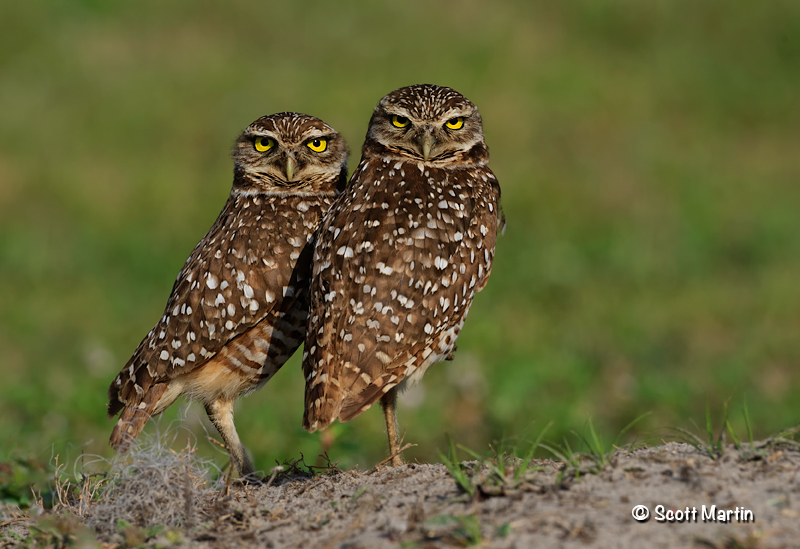
by Scott Martin Photography | Apr 13, 2012 | Birds, Blog, Raptors, Travel
This past year it has been a bit of a challenge to photograph owls and this has led much travel however each mile has been a pleasure, especially in the case of the Burrowing Owl who wisely chooses to live in Florida! Last month we went with our son and daughter in law to photograph Burrowing Owls in Hollywood, Florida which is a suburb of Fort Lauderdale. We visited about six burrows and saw about half a dozen different birds.
Burrowing Owls are small birds approximately 9″ tall with a wing span of about 24″ and have characteristically long legs giving them a unique appearance. They are a relatively common owl found throughout North and South America however as they tend to favour the western parts of the Americas we don’t see them in Ontario. As their name indicates, these small owls live underground, a rarity for animals that fly! Non-migratory Burrowing Owls will occupy the same burrow for many years and spend most of their time very close to the burrow, taking flight to catch bugs and insects or avoid being preyed upon by snakes or even cats. There is not much dimorphism between the sexes however the males tend to be slightly longer and leaner and often lighter in colour which is thought to be due the bleaching effect of the sun on the males who are typically outside of the burrow more than the female.
A good-looking couple!

.
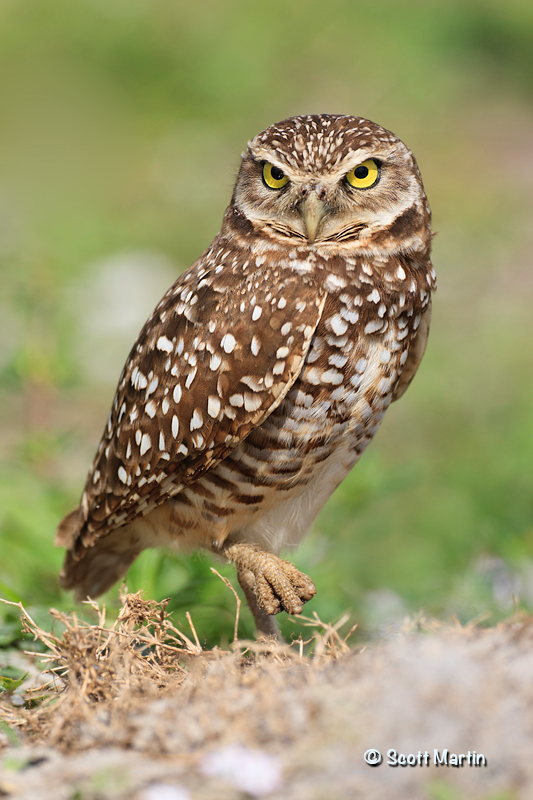
.
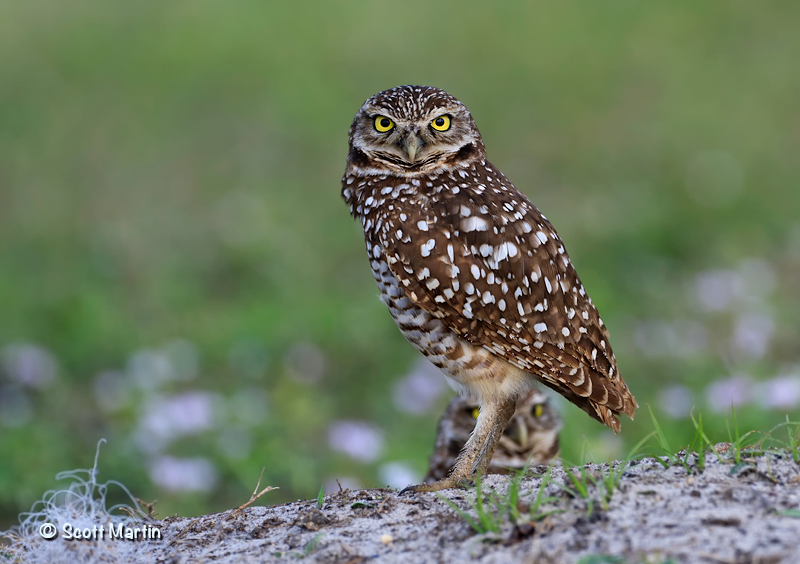
.
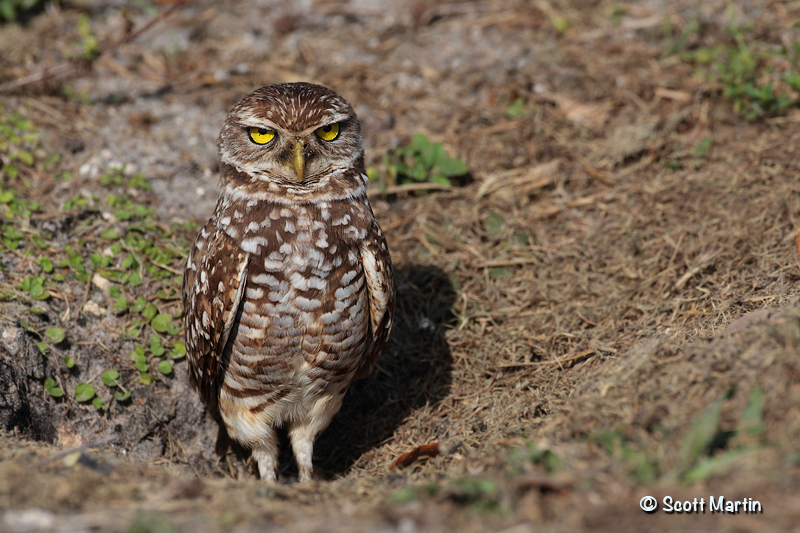
.
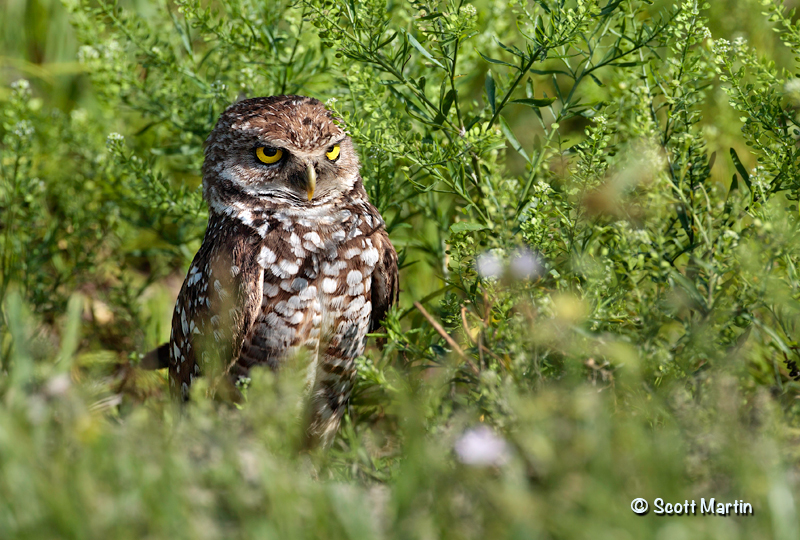
.
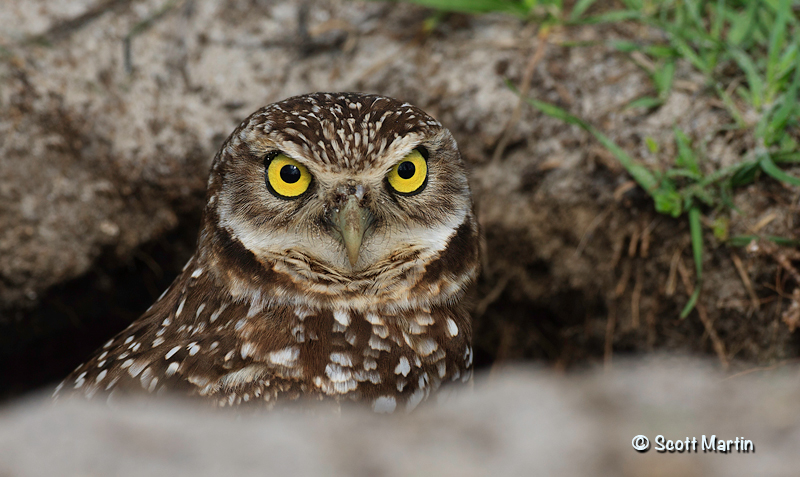
Just to show that Burrowing Owls really do burrow their own homes, even if it means throwing sand on their partner!
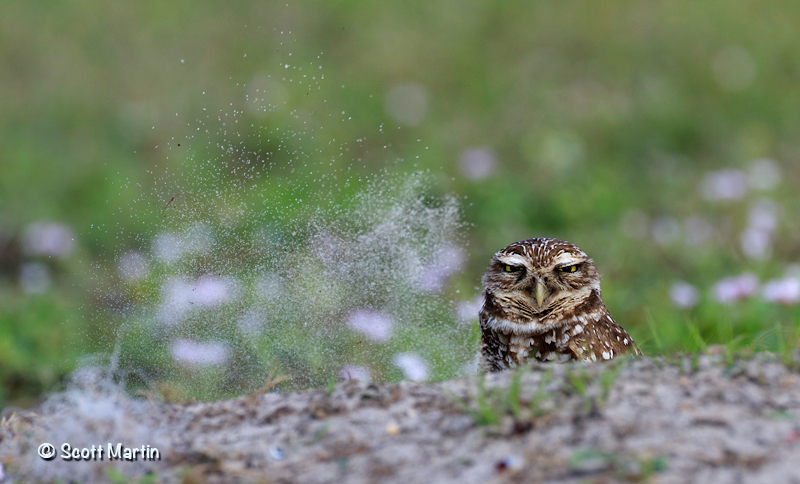
But don’t worry he felt bad and immediately and meticulously removed all the sand 🙂
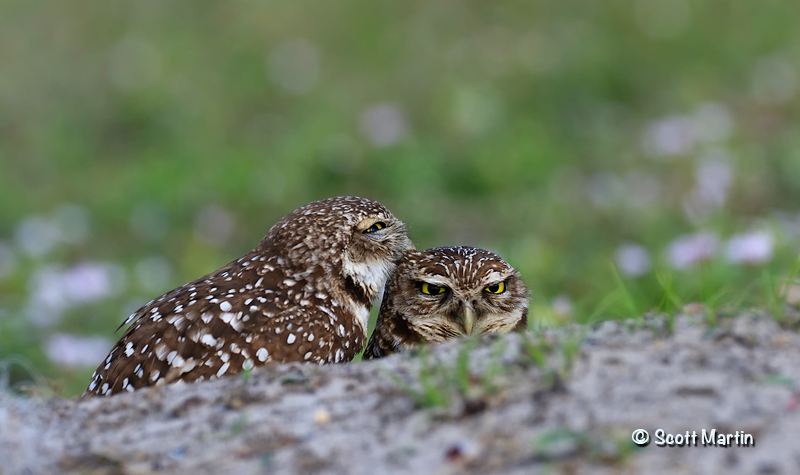
The Burrowing Owl is constantly scanning the environment for threats and responds immediately when one is detected. When I looked around after seeing this expression there was one hawk flying overhead, at least three hundred yards away. Owls are unique in that each of their pupils respond independently to incident light and you can see the different pupil sizes in the following image.
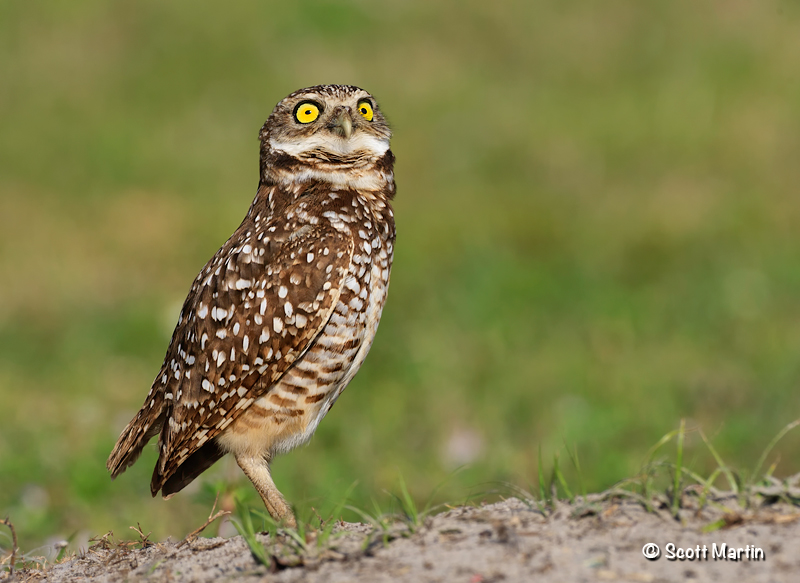
We had an enjoyable time watching the Burrowing Owls as they are quite active through the day although they do most of their hunting between dusk and dawn. The next time you are visiting the sunshine state, you might just want to go looking for a burrow; you will be glad you did!
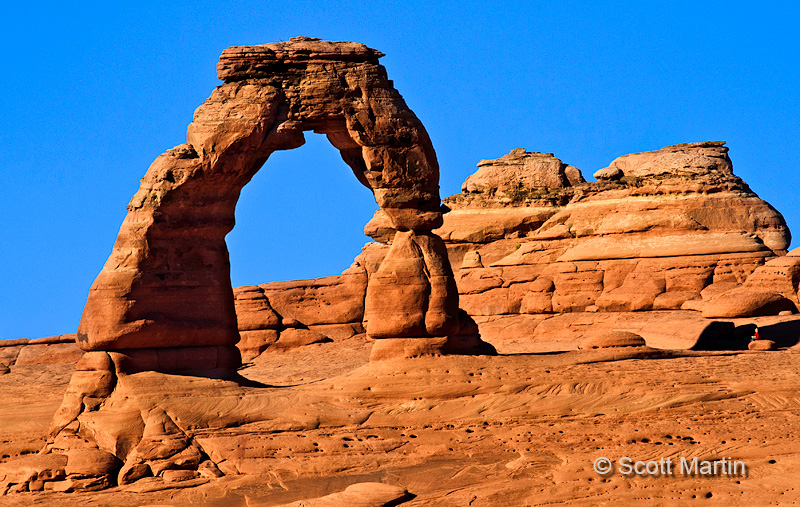
by Scott Martin Photography | Apr 9, 2012 | Blog, Landscapes, Naturescapes, Travel
Arches National Park contains an incredible display of some of the most interesting geologic formations on the planet and as the name implies, many of them are aches. In fact, there are over two thousand natural stone arches in the park. Probably the most famous arch in the park is Delicate arch, which requires a little hiking to get to, however spending a sunset at the arch is certainly one of the best sunsets you will ever see.
Delicate Arch lies on the edge of a precipice about one thousand feet above a salt valley and can be viewed from either side of the valley, although from the opposite side of the valley you are probably a mile or so from the arch. Deb and I observed the arch from both sides of the valley, which made for an enjoyable afternoon of hiking, although carrying thirty pounds of camera gear felt like three hundred pounds by the time we were finished.
We first hiked the Delicate Arch Viewpoint trail, which is an easy 1.8 mile loop that gains about three hundred feet in elevation from the trailhead. The view across the salt valley to the arch is impressive however you will need a long lens to photograph the arch from this vantage point. This first shot was taken from the natural amphitheatre across the valley from the arch with a 400mm lens. The little guy in a bright red shirt sitting alone on a boulder looking at the arch makes this shot.

The hike to the base of the arch is a bit more arduous, and climbs about 500 feet over a trail that creates a round trip of just over three miles. It’s an interesting trail in that you don’t see the arch until the last few feet of the hike, but what an incredible sight when you come out from walking along a sandstone wall and catch that first view of the arch. About five hundred feet before reaching the top of the trail, your can see Framers Arch in the sandstone wall that blocks the view of Delicate Arch. You have to climb up the wall about twenty feet, but viewing Delicate Arch through Framers Arch makes for a good photograph.
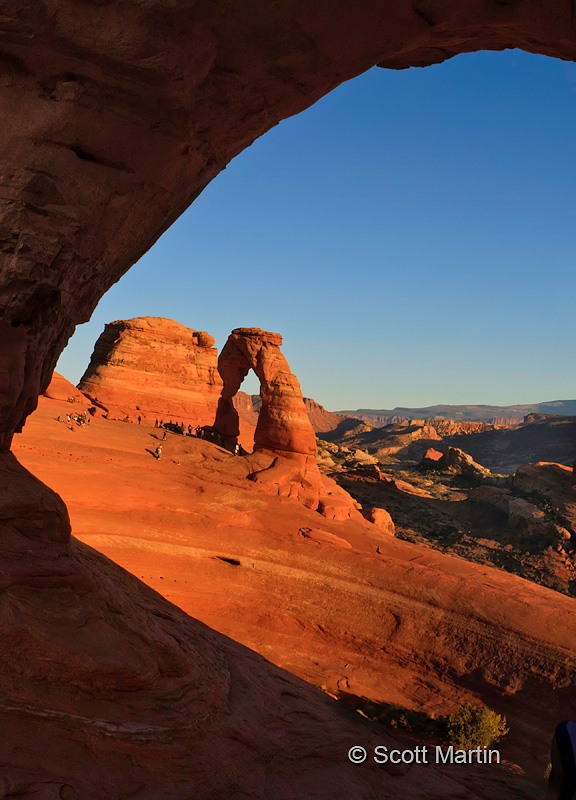
Delicate Arch overlooks a salt valley with the La Sal mountain range in the back ground.
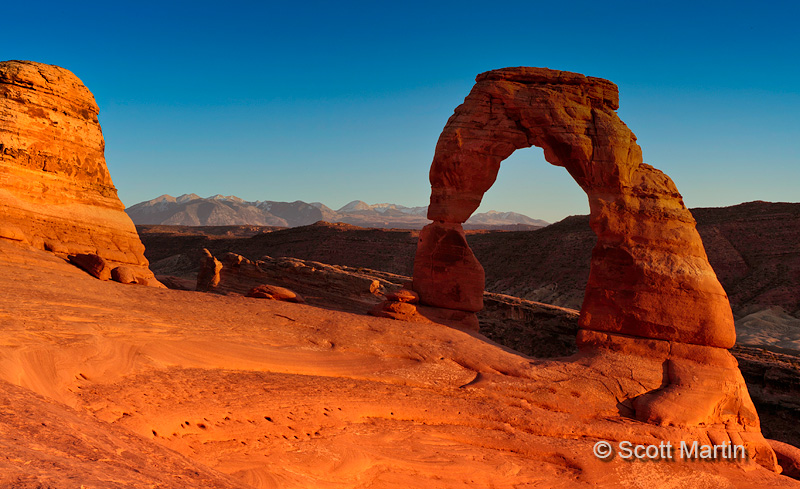
As the sun goes down over the horizon the natural red rocks take on an amazing colour.
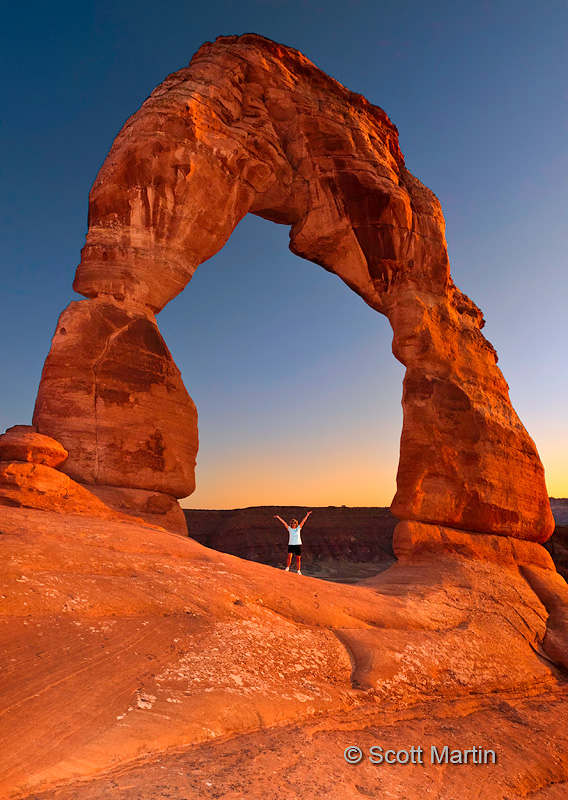
Sunset at Delicate Arch.
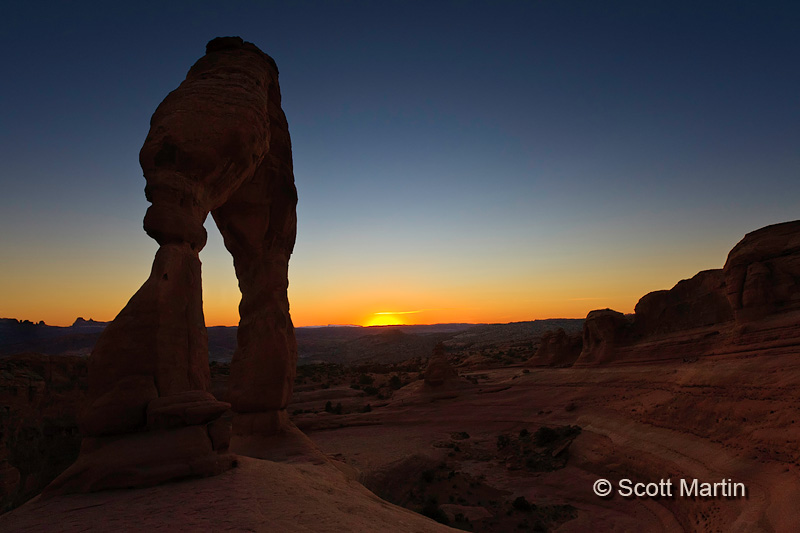
.
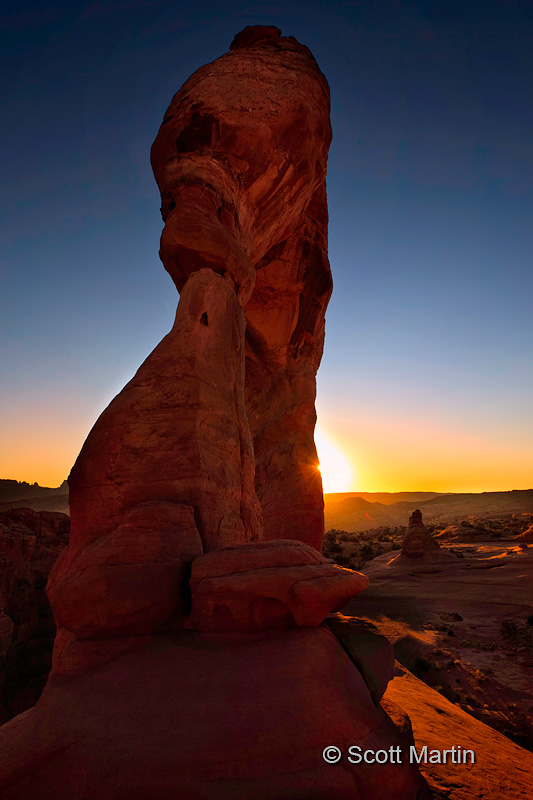
.
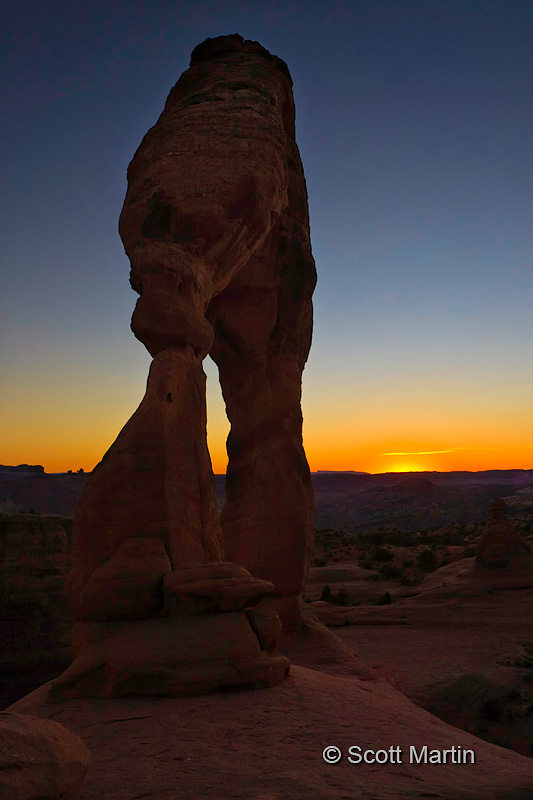
Seeing the Delicate Arch was one of the many highlights of our trip to the canyon lands area of the States and I trust these images encourage you to make the trip!
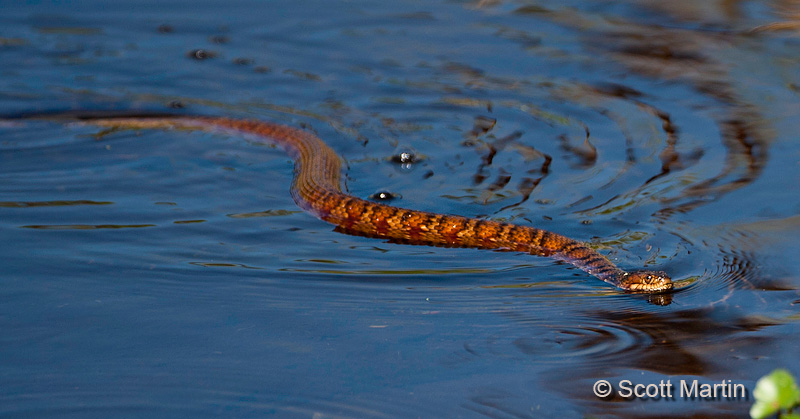
by Scott Martin Photography | Apr 8, 2012 | Blog, Travel, Wildlife
Orlando Wetland Park is located about forty-five minutes east of Orlando in Christmas, Florida. It’s a wonderful spot to walk and observe the diverse fauna and flora typical of Florida wetland habitat. While Deb and I wandered around the wetlands, quite lost in the vast expanse of the park, we met Josh and his family, who were serious herpetologists. They taught us a whole new way to observe wetlands, concentrating on the snakes and reptiles of the area as opposed to the birds we normally focus on. There is a whole new world out there, one that we will pay more attention to next time in the wetlands and I probably won’t wander as close to the water’s edge to get that low angle on a shore bird without also looking for fangs and rattles.
Florida Banded Water Snake

Pygmy Rattlesnake, a small rattler that is rather reclusive however we were told not to confuse its small size with its ability to really cause some grief if it sunk its fangs into your leg. Apparently, although rarely fatal in adults, a bite would cause a couple of days of severe pain regardless of treatment.
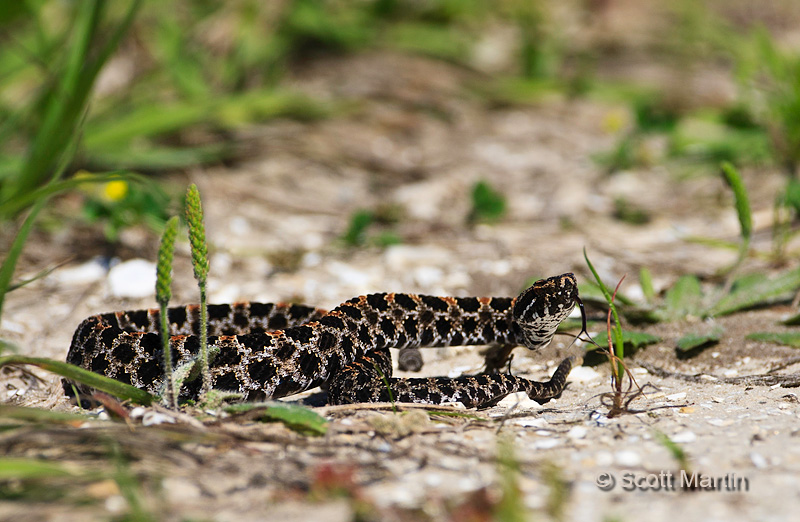
.
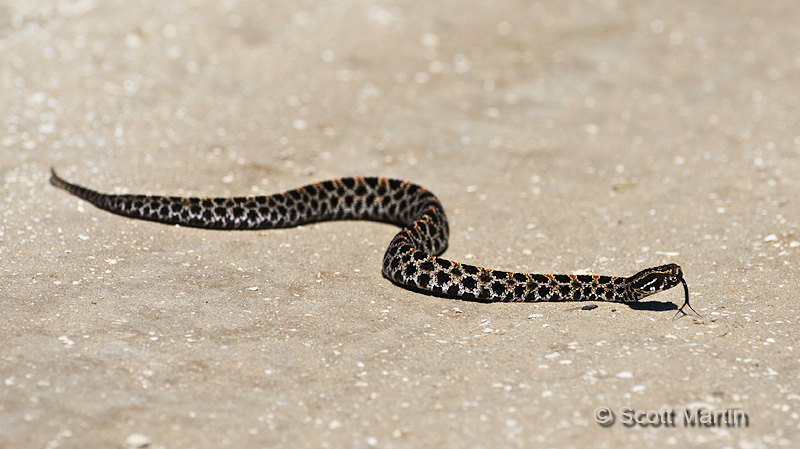
The Water Moccasin is a pit viper that is also found in Florida. Much larger than the Pygmy Rattler and although rarely aggressive towards humans does posses a potentially fatal bite. The Water Moccasin is the world’s only semiaquatic viper. The following image was taken at the Viera Wetlands, about thirty miles south-east of the Orlando Wetland Park.
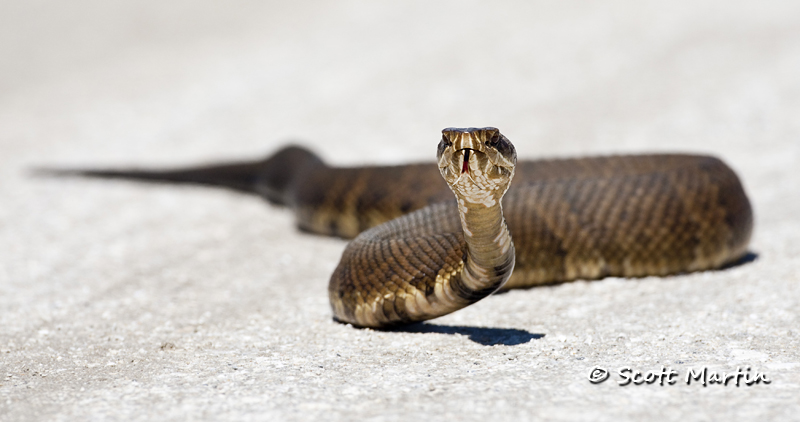
The Orlando Wetlands Park is also known for the large Garpike that inhabit some of its ponds. The gar has a body shape not unlike our Northern Pike, however their broad, teeth lined mouths give the Garpike a very distinctive look.
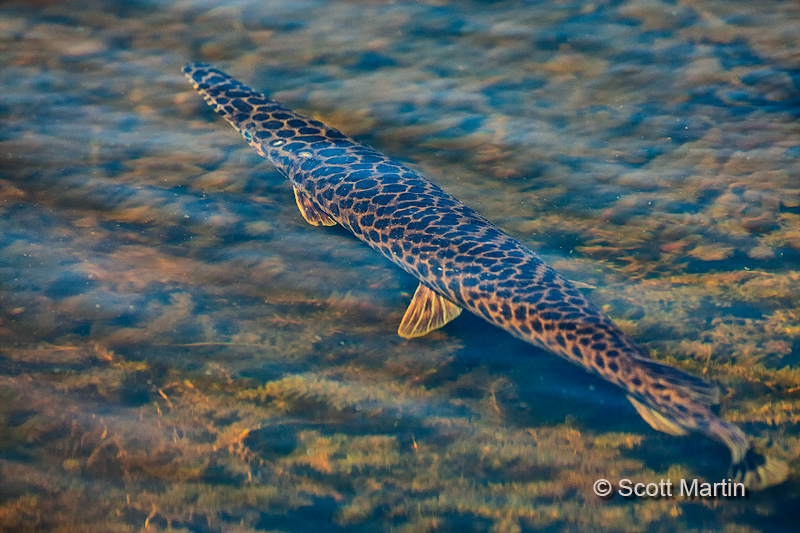
It’s almost impossible not to see alligators while walking around in Florida wetlands, however it is unusual to see new-born alligators as we did this year. We counted eight little gators, that Josh explained to us were probably only a day old and enjoyed watching them swimming around under the watchful eye of their mother who was lurking close by in the reeds. The young alligators were about ten inches long and almost cute….well maybe that’s an exaggeration.
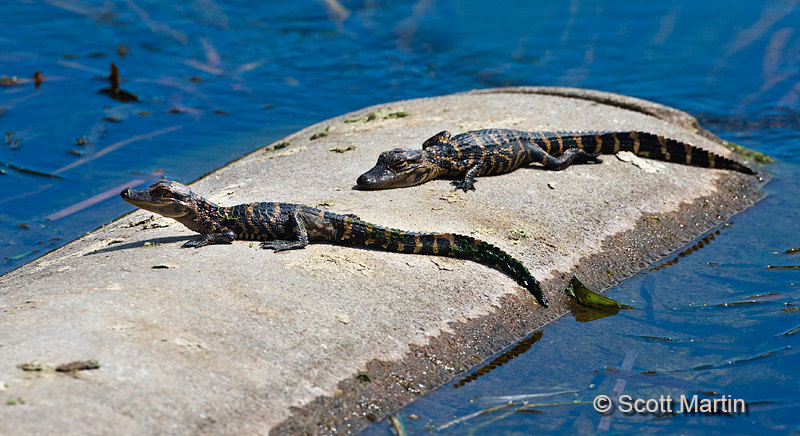
Someday they will look like this.
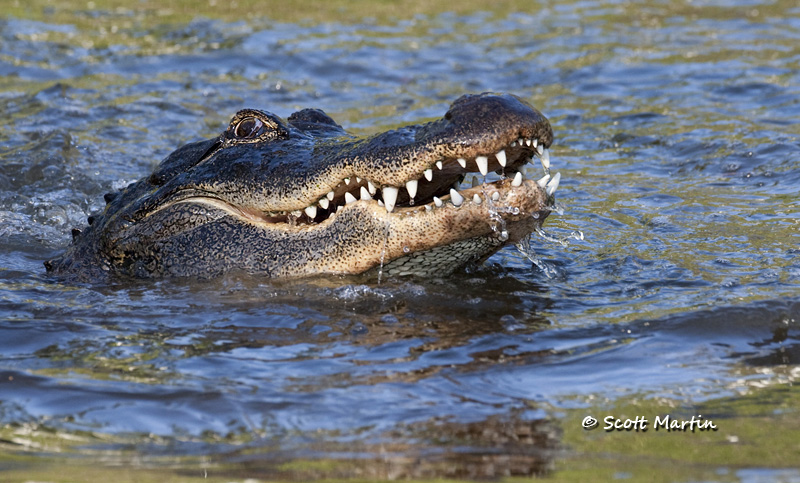
In keeping with the wildlife theme of this post, here are a couple of shots taken in Algonquin Park just before we headed to Florida for March break. This Red Fox was very friendly, infact as soon as I squatted down to get a low angle for these shots the fox came right up to the end of my lens, presumably looking for a handout.
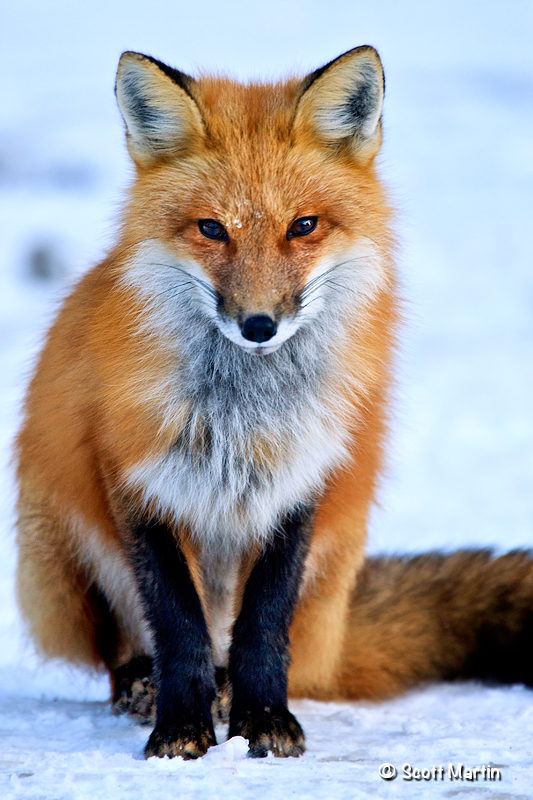
.
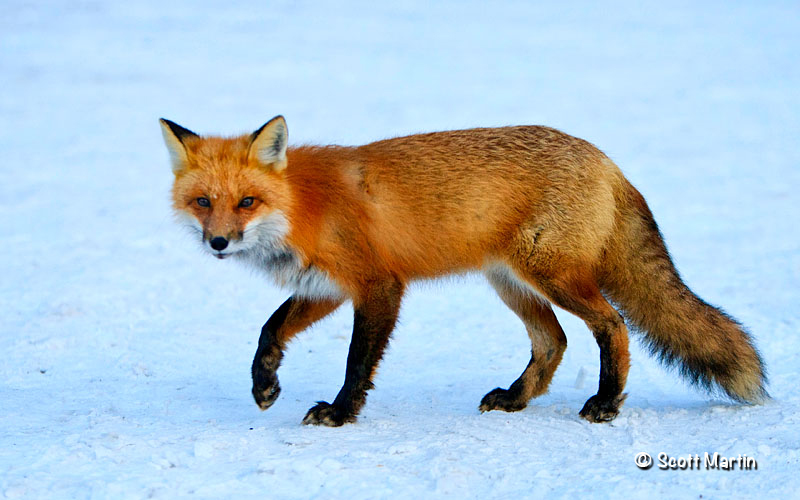
Other sample of wildlife can be seen in the gallery


























































Follow Scott Martin Photography